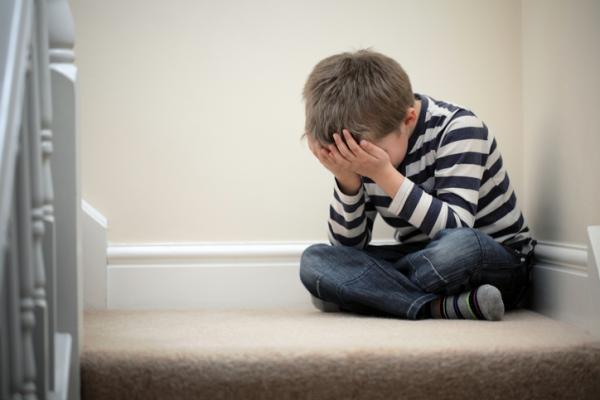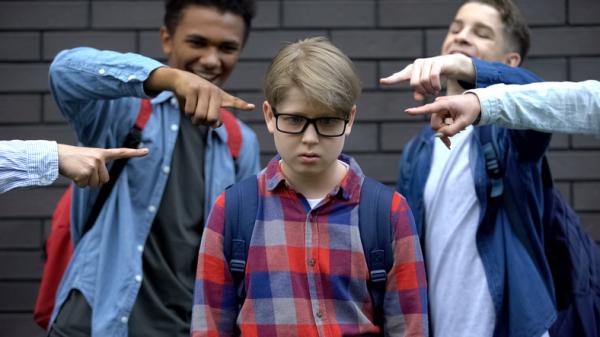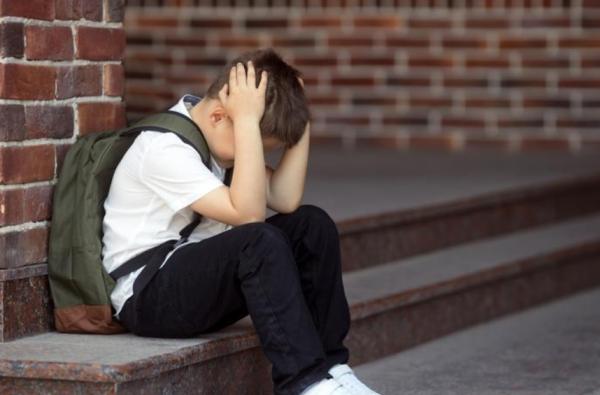A child sits alone in an apartment, trying to figure out how to make dinner from whatever’s in the fridge. Another wears the same dirty clothes to school every day, shivering because the jacket’s too thin for winter. A third begs their parent to take them to the doctor for the persistent cough that’s lasted weeks, but keeps hearing “We can’t afford it right now.” These children aren’t experiencing dramatic, visible abuse—they’re experiencing something quieter, more insidious, and statistically more common: neglect.
Neglect is the most prevalent form of child maltreatment, yet it’s often the hardest to recognize and the easiest to dismiss. Unlike physical or sexual abuse, which leave visible marks or clear evidence, neglect is defined by absence—what doesn’t happen rather than what does. No meals prepared. No bedtime routine established. No emotional comfort offered. The wounds are invisible but profound, shaping how children develop, relate to others, and navigate the world for the rest of their lives.
What makes neglect particularly complicated is that it exists on a spectrum. At one end, you have severe cases where children’s basic survival needs go unmet—malnutrition, exposure to dangerous conditions, complete lack of supervision. At the other end, you have situations where parents provide physical necessities but offer no emotional warmth, attention, or nurturing. Both extremes harm children, just in different ways.
The causes of neglect are rarely simple. The stereotype of the deliberately cruel or indifferent parent doesn’t match reality for most cases. More often, neglect emerges from a toxic combination of poverty, mental illness, substance abuse, lack of knowledge about child development, overwhelming stress, and insufficient support systems. Parents might love their children deeply while still failing to meet their needs due to circumstances beyond their control or internal struggles they don’t know how to manage.
This doesn’t excuse neglect or minimize its harm. Children suffer regardless of whether their parents intended to harm them or were overwhelmed by forces they couldn’t handle. But understanding causes matters for prevention and intervention. If we treat all neglect as deliberate cruelty requiring only punishment, we miss opportunities to address the systemic issues—poverty, lack of mental health care, inadequate parental education—that create conditions where neglect thrives.
What follows is a comprehensive examination of parental neglect: what forms it takes, what causes it, and what lasting damage it inflicts on developing children. This isn’t comfortable reading. But it’s necessary if we’re going to recognize neglect when we see it, understand the complex factors that produce it, and intervene effectively to protect vulnerable children.
Physical Neglect: When Basic Needs Go Unmet
Physical neglect means failing to provide the material necessities children need to survive and develop properly: food, clothing, shelter, hygiene, and safety. This is often what people think of first when they hear “neglect”—the child who’s chronically hungry, inadequately dressed for weather, or living in dangerous conditions.
But physical neglect isn’t always about complete absence of care. A child might be fed regularly but given only junk food—chips, soda, fast food—resulting in malnutrition despite consuming calories. They might have clothes but nothing appropriate for the season, wearing shorts in winter or heavy coats in summer. They might have housing but live in conditions with broken windows, no heat, rodent infestations, or exposed electrical wiring.
Inadequate supervision falls under physical neglect too. Young children left alone for hours while parents work or are absent. School-age kids responsible for caring for themselves and younger siblings without adequate maturity or resources. Teenagers given complete freedom without any parental monitoring of their whereabouts, activities, or companions.
The harm from physical neglect is straightforward in severe cases—children get sick, injured, or die from malnutrition, exposure, accidents, or dangerous situations they couldn’t navigate safely. But even moderate physical neglect creates lasting damage: developmental delays, chronic health problems, heightened stress responses, and difficulty trusting that the world will meet their needs.
Poverty complicates how we define physical neglect. Parents struggling financially might genuinely lack resources to provide everything their children need. The ethical and legal question becomes: when does poverty-driven inability to provide cross into neglect? Most frameworks distinguish between parents who can’t provide despite genuine effort and those who won’t provide despite having options. But that line gets blurry in practice.
Medical Neglect: Ignoring Health Needs
Medical neglect occurs when children don’t receive necessary health care—routine checkups, vaccinations, dental care, treatment for illness or injury, mental health services, or management of chronic conditions. Sometimes this results from parents not recognizing the need. Other times they recognize it but don’t act.
A child with untreated asthma who struggles to breathe during flare-ups because parents won’t fill prescriptions or take them to appointments. A teenager with obvious depression whose parents dismiss it as “just a phase” and refuse to seek help. A preschooler with rotting teeth because parents never established dental care routines or addressed cavities.
Medical neglect can also involve refusing evidence-based treatment in favor of ineffective alternatives, or prioritizing religious beliefs over children’s health needs in ways that cause serious harm. The legal and ethical boundaries here are contentious—parents have rights to make medical decisions for their children, but those rights aren’t unlimited when delay or refusal creates significant risk of harm.
The consequences of medical neglect range from minor to catastrophic. Untreated ear infections can cause hearing loss. Neglected dental problems lead to chronic pain and systemic health issues. Mental health conditions left untreated in childhood often become more severe and harder to treat in adulthood. Chronic conditions managed poorly result in preventable complications, emergency room visits, and sometimes permanent disability or death.
Poverty again plays a role—parents without health insurance or transportation might genuinely struggle to access care even when they recognize the need. But medical neglect becomes clear when parents with resources and access still don’t provide necessary care, when they repeatedly miss appointments without legitimate reasons, or when they actively prevent others from providing care their children need.
Educational Neglect: Depriving Children of Learning
Educational neglect happens when parents don’t ensure their children receive appropriate education—failing to enroll them in school, allowing chronic absenteeism, not addressing special educational needs, or creating home environments that prevent learning.
The child who’s missed weeks or months of school because parents don’t make them attend, accept their refusals, or keep them home to care for siblings or work. The student with obvious learning disabilities whose parents won’t consent to evaluation or refuse special education services. The kid whose homework is never checked, whose school supplies are never provided, whose parent never attends conferences or responds to teacher communications.
Education is a basic need—it’s how children develop cognitive abilities, social skills, and the knowledge needed to function as adults. Depriving children of education doesn’t just limit their future options; it stunts their development in real time. They fall behind peers academically, socially, and emotionally. They miss opportunities to identify and address learning disabilities or giftedness. They don’t develop the work habits, persistence, and problem-solving skills that school teaches alongside content.
Educational neglect often overlaps with other forms. Parents dealing with mental illness or addiction might not have bandwidth to monitor school attendance. Families experiencing homelessness struggle to maintain school enrollment. Parents with their own negative school experiences might not value education or know how to support their children’s learning.
The long-term consequences are severe: higher dropout rates, limited employment options, poverty, and increased likelihood of involvement with criminal justice systems. Education is the primary pathway out of intergenerational poverty, so educational neglect doesn’t just harm individual children—it perpetuates cycles of disadvantage across generations.
Emotional Neglect: The Invisible Wound
Emotional neglect is the hardest type to identify because it’s purely about absence—no emotional warmth, attention, comfort, or nurturing. Parents might provide all physical needs while remaining emotionally distant, unresponsive, or dismissive of their children’s feelings and needs for connection.
The parent who never expresses affection or pride. The one who’s physically present but psychologically absent, absorbed in their phone or TV while their child tries unsuccessfully to engage them. The caregiver who responds to children’s emotional distress with irritation, dismissal, or complete indifference. The family where children are fed and clothed but never hugged, praised, or told they’re loved.
Young children especially need emotional responsiveness to develop secure attachment, which becomes the foundation for all later relationships and emotional regulation. When caregivers consistently fail to respond to infants’ signals, those babies stop expecting their needs to be met. They become withdrawn, stop seeking connection, and develop what attachment researchers call “disorganized attachment”—they don’t know how to form relationships because their earliest relationships taught them that reaching out brings no response or unpredictable responses.
Emotional neglect in older children looks like parents who show no interest in their lives, never attend important events, don’t notice or respond to signs of distress, or actively invalidate their children’s feelings. “Stop crying.” “You’re too sensitive.” “That’s nothing to be upset about.” These responses teach children their emotions are wrong, invalid, or unwelcome.
The damage is profound and lasting. Emotionally neglected children struggle with self-worth, believing they’re fundamentally unlovable or unimportant. They have difficulty identifying and expressing emotions because they never learned emotional vocabulary or had feelings validated. They often develop anxiety, depression, or personality disorders in adulthood, and struggle to form healthy intimate relationships because they never experienced one growing up.
What makes emotional neglect particularly insidious is that it often happens in families that look fine from the outside. Parents might be financially successful, involved in community activities, and attentive to children’s physical needs while remaining completely emotionally unavailable. The children grow up materially comfortable but emotionally starving, often not even recognizing what’s missing because they’ve never experienced anything different.
What Causes Parents to Neglect Children
Neglect rarely has a single cause. It usually emerges from multiple interacting factors operating at individual, family, community, and societal levels. Understanding these causes doesn’t excuse neglect but is essential for effective prevention and intervention.
Mental health problems, particularly depression, significantly increase neglect risk. Depressed parents struggle to meet their own basic needs, let alone their children’s. They lack energy, motivation, and emotional availability. Tasks like preparing meals, helping with homework, or providing emotional support feel overwhelming. Severe depression can make parents so internally focused on their own pain that they genuinely don’t register their children’s needs.
Substance abuse profoundly compromises parenting capacity. Parents using drugs or alcohol prioritize obtaining and using substances over meeting children’s needs. Their judgment is impaired, their behavior unpredictable, their attention focused on addiction rather than parenting. Money that should buy food or clothing goes to substances instead. Children of addicted parents often take on caretaking roles, trying to manage adult responsibilities they’re not equipped to handle.
Parental cognitive limitations matter too. Parents with intellectual disabilities or very limited education might not understand what children need at different developmental stages or how to provide it. They might genuinely not recognize that young children can’t safely be left alone, that infants need responsive interaction beyond just feeding, or that school attendance is legally required. These parents need education and support, not just punishment.
Domestic violence creates environments where children’s needs become secondary to survival and managing an abusive partner. The victimized parent, often dealing with trauma, fear, and the controlling behaviors of an abuser, may have little energy or freedom to focus on children. The abuse itself creates chaos and instability that prevents consistent caregiving.
Poverty doesn’t cause neglect directly, but it creates conditions where neglect becomes more likely. Parents working multiple low-wage jobs have less time and energy for children. Financial stress creates anxiety and depression. Lack of resources means parents must make impossible choices—pay rent or buy food, fill prescriptions or fix the car. Living in neighborhoods with limited services, poor schools, and high crime adds additional stress and limits children’s opportunities.
Young or immature parents might lack the knowledge, skills, or emotional capacity for good parenting. Teenage mothers especially face challenges combining their own developmental needs with parenting responsibilities. Unplanned pregnancies where parents resent the child or feel unprepared create risk for neglect.
Social isolation matters enormously. Parents without support systems—extended family, friends, community connections—bear parenting stress alone without help, respite, or perspective. Isolated families don’t have others noticing and intervening when neglect develops. They don’t have people to ask for help or even realize help is needed.
The Immediate Impact on Children
Neglect damages children immediately, even if the full consequences don’t become apparent until later. Young children experiencing neglect show developmental delays across multiple domains—language, motor skills, cognitive abilities, and social-emotional development.
Infants and toddlers need responsive caregiving for healthy brain development. When that responsiveness is absent, neural pathways for emotional regulation, social connection, and stress management don’t develop properly. The first two years of life are critical periods when brains are forming the foundational architecture for everything that comes later. Neglect during this window causes damage that’s difficult to fully reverse later.
Physically neglected children often show signs of malnutrition or failure to thrive—poor growth, low weight, developmental delays. They get sick more often because poor nutrition, hygiene, and health care weaken immune systems. They have more accidents and injuries because inadequate supervision puts them in dangerous situations they lack the capacity to navigate safely.
School-age children experiencing neglect struggle academically—they’re absent frequently, lack supplies and support for homework, and often have undiagnosed learning disabilities. They have trouble concentrating because they’re hungry, tired, worried, or dealing with untreated health problems. Their social development suffers too—they don’t learn appropriate social skills, have difficulty forming friendships, and may be bullied or rejected because of poor hygiene, inappropriate clothing, or behavioral problems.
Emotionally neglected children often appear withdrawn, anxious, or have difficulty regulating emotions. They might be excessively clingy with adults, desperately seeking the attention and connection they don’t get at home. Or they might be completely shut down, having learned that expressing needs brings no response so there’s no point trying.
Behaviorally, neglected children often act out—aggression, defiance, stealing, lying. These behaviors make sense as desperate attempts to get needs met or to express pain and anger they don’t have words for. Teachers and other adults often respond punitively to these behaviors without recognizing them as symptoms of neglect, which reinforces children’s beliefs that adults won’t help them and the world is hostile.
Long-Term Consequences Into Adulthood
The effects of childhood neglect don’t stop at eighteen. Adults who experienced significant neglect carry lasting consequences that affect every aspect of their lives—relationships, mental health, physical health, and socioeconomic outcomes.
Attachment problems persist into adulthood, making intimate relationships difficult. People who didn’t experience secure attachment as children struggle to trust partners, manage intimacy, or believe they’re worthy of love. They might be anxiously attached, constantly seeking reassurance, or avoidantly attached, keeping everyone at distance. Their relationships often recreate the dysfunction they experienced growing up because that’s the only template they have.
Mental health consequences are severe. Adults with histories of neglect show dramatically higher rates of depression, anxiety disorders, PTSD, personality disorders, and substance abuse. The emotional regulation problems that began in childhood persist and often worsen without intervention. Many turn to drugs, alcohol, or other addictive behaviors to manage emotional pain they were never taught to process healthily.
Physical health suffers too—childhood neglect predicts higher rates of obesity, heart disease, diabetes, and other chronic conditions in adulthood. The chronic stress of neglect damages developing bodies in ways that create vulnerability to disease decades later. Neglected children often don’t learn healthy habits around nutrition, exercise, sleep, or hygiene, and these patterns persist into adulthood.
Socioeconomically, neglected children face steep disadvantages. Educational neglect limits employment options and earning potential. The cognitive impacts of early neglect affect job performance and career advancement. The relationship problems interfere with building professional networks and maintaining employment.
Perhaps most tragically, childhood neglect increases the likelihood of perpetuating the cycle—neglected children become parents who struggle with their own children. Without intervention that helps them process their trauma and learn different patterns, they parent as they were parented. They might recognize intellectually that neglect harmed them but lack the skills, emotional resources, or support to parent differently. Breaking intergenerational cycles of neglect requires deliberate effort, usually with professional help.
When Does It Cross the Line Into Abuse?
Defining the boundary between imperfect parenting and neglect worthy of intervention is genuinely difficult. All parents fail their children sometimes—miss a doctor’s appointment, serve unhealthy meals occasionally, get absorbed in their own concerns and miss emotional cues. These failures don’t constitute neglect if they’re occasional within a context of generally adequate care.
Neglect becomes concerning when failures are chronic and pattern-based rather than occasional. The child who rarely gets adequate meals, not just the one who occasionally eats junk food. The parent who consistently ignores emotional needs, not just the one who has a bad day. The family where supervision is always inadequate, not just the one where parents occasionally misjudge what a child can handle.
Severity matters too. Moderate neglect—a child often dressed inappropriately for weather—differs from severe neglect—a child suffering frostbite from exposure. The first might warrant community support and parental education. The second requires child protective intervention.
Intent is tricky. Legally, neglect doesn’t require intent to harm—failure to meet children’s needs causes damage regardless of whether parents meant to hurt them. But distinguishing between parents who can’t provide versus won’t provide despite having options matters for determining appropriate interventions. The overwhelmed single mother working two jobs who can’t afford adequate food needs different support than the wealthy parents who don’t bother ensuring their child attends school.
Cultural context complicates definitions further. What one culture considers necessary supervision might seem overprotective or neglectful in another. Sleeping arrangements, discipline practices, and acceptable levels of independence vary culturally. Child protection systems struggle to distinguish harmful neglect from cultural differences in parenting, sometimes intervening inappropriately in families whose practices differ from mainstream norms but aren’t actually harmful.
FAQs About Parental Neglect
Is neglect always intentional?
No, neglect is rarely intentional in the sense of parents deliberately trying to harm children. Most neglect results from some combination of inability and lack of knowledge rather than malice. Parents might be overwhelmed by poverty, mental illness, addiction, or other challenges that compromise their capacity to meet children’s needs. They might not understand what children need at different ages or lack skills for providing it. Some parents experienced neglect themselves and genuinely don’t realize their parenting is inadequate because it’s all they know. However, the legal and child protection definitions of neglect don’t require intent—children suffer regardless of whether parents meant to harm them, and intervention is based on children’s needs being unmet, not on parents’ motivations.
Can wealthy families neglect their children?
Absolutely. While poverty increases risk for physical neglect of basic needs, emotional neglect occurs across all socioeconomic levels. Wealthy parents can be completely emotionally unavailable to children despite providing material comfort. They might be so focused on careers that they outsource all caregiving without maintaining emotional connections. Some provide everything money can buy but no affection, attention, or emotional support. Children of wealthy families can experience medical or educational neglect if parents prioritize other concerns over addressing children’s health or learning needs. The difference is that physical neglect—inadequate food, shelter, clothing—is less likely in wealthy families simply because resources are available, though it can still occur if parents are sufficiently impaired by addiction or mental illness that they don’t utilize available resources.
How can I tell if I was emotionally neglected as a child?
Adults who experienced childhood emotional neglect often struggle to recognize it because they have no positive comparison—they don’t know what they missed. Common signs include difficulty identifying and expressing your own emotions, feeling like something is fundamentally wrong with you without knowing what, struggling with low self-worth despite external success, having trouble forming intimate relationships or feeling disconnected in relationships, minimizing your own needs and feelings, difficulty asking for help, and feeling emotionally numb or empty. You might have memories of physically comfortable childhood but can’t remember parents being emotionally engaged—no memories of being comforted when upset, praised for achievements, or having meaningful conversations. If your parents met physical needs but you felt invisible or that your emotional needs were burden, that suggests emotional neglect.
What should I do if I suspect a child is being neglected?
If you suspect neglect, start by assessing severity and immediacy of risk. Is the child in immediate danger requiring emergency intervention? Call 911 or emergency services. For ongoing concerns that don’t constitute immediate emergency, report to your local child protective services—they’re trained to investigate and assess whether intervention is needed. You don’t need proof or certainty to report—just reasonable concern based on what you’ve observed. Reports can be made anonymously in most places. You can also approach the family directly if you feel comfortable, offering support rather than judgment—sometimes parents are struggling and need help, not punishment. Connect them with community resources if appropriate. Teachers, doctors, and other mandated reporters have legal obligations to report suspected neglect and can be helpful resources for guidance.
Can you overcome the effects of childhood neglect?
Yes, though it’s difficult and requires deliberate effort, usually with professional help. Therapy, particularly trauma-informed approaches that address attachment issues and developmental trauma, can help people process neglect experiences and develop healthier patterns. Learning about healthy relationships, emotional regulation skills, and child development helps break cycles. Building support systems provides what was missing in childhood. The brain remains plastic throughout life—new neural pathways can form to support healthier functioning, though it’s harder than if those pathways had developed properly initially. Complete “recovery” might not be realistic—childhood neglect leaves lasting marks—but significant healing and improved functioning are absolutely possible. Many adults who experienced neglect go on to form healthy relationships, parent well, and live satisfying lives, though most require therapy and conscious effort to achieve this rather than it happening automatically.
Is there a difference between neglect and poverty?
Yes, absolutely. Poverty means lacking financial resources; neglect means children’s needs aren’t being met when options exist. Poor parents can provide excellent care within their means—children might not have name-brand clothes or newest toys, but they’re fed, clean, supervised, loved, and their emotional and educational needs are met. Neglect occurs when parents don’t utilize available resources or when their behavior (substance abuse, leaving children unsupervised, refusing medical care) prevents needs from being met regardless of resources. However, poverty significantly increases neglect risk by creating stress, limiting options, and making it harder to meet needs. The ethical challenge is distinguishing between neglect caused by poverty versus neglect co-occurring with poverty. Most child protection systems try not to intervene solely for poverty-related issues unless parents refuse available assistance or other factors indicate genuine neglect beyond financial constraints.
Can neglected children develop normally?
It depends on timing, severity, and whether intervention occurs. The earlier and more severe the neglect, the more profound the impact. Neglect during the first two years causes the most lasting damage because that’s when foundational brain architecture develops. However, children are remarkably resilient—if intervention provides safe, nurturing care relatively early, significant recovery is possible, especially for younger children. The brain’s plasticity means that appropriate experiences can partially compensate for early deprivation. Children removed from neglectful situations and placed in stable, loving homes can make dramatic developmental gains, though they might still show some lasting effects. The key factors are ending the neglect, providing what was missing, and addressing trauma. Without intervention, neglected children typically don’t develop normally—the missing experiences during critical periods create lasting deficits. But with appropriate support, many can recover substantially, though they might need ongoing help managing the consequences of early trauma.
Why don’t neighbors or teachers report suspected neglect more often?
Multiple factors prevent reporting. People often aren’t sure what constitutes neglect versus just different parenting styles or poverty. They fear being wrong, interfering inappropriately, or getting families in trouble unnecessarily. Cultural norms about minding your own business or not involving authorities discourage reporting. People worry about retaliation from parents or damaging relationships with families they’ll continue living near. There’s often confusion about what to report and to whom. Some fear the child protection system will make things worse rather than better, especially for families of color who face disproportionate intervention and harsher consequences. Teachers and other mandated reporters sometimes struggle to balance reporting obligations with relationships they’re trying to maintain with families. Overcoming these barriers requires education about recognizing neglect, understanding reporting processes, and building trust that reports will be handled appropriately rather than punitively.
What happens after someone reports child neglect?
Process varies by jurisdiction, but generally: child protective services receives and screens the report to determine whether it meets criteria for investigation. If it does, a caseworker investigates, typically within 24-72 hours depending on assessed risk. Investigation involves interviewing the child, parents, and relevant others, plus home visits to assess conditions. If neglect is substantiated, CPS develops a service plan—this might mean connecting family with resources, requiring parenting classes or therapy, monitoring the situation, or in severe cases, removing children to foster care while parents address issues. The goal is usually family preservation when safe—providing support so children can remain home. Removal happens when neglect is severe and immediate safety concerns exist that can’t be addressed through services. Most cases don’t result in removal but in support services. Throughout, the standard is children’s safety and wellbeing, not punishing parents, though the reality sometimes falls short of this ideal.
How can parents prevent accidentally neglecting their children?
Self-awareness is key—recognize when you’re overwhelmed, struggling with mental health, or unable to meet your children’s needs. Seek help early rather than waiting for crisis. Build support systems—friends, family, community resources—so you’re not parenting in isolation. Educate yourself about child development so you understand what children need at different ages. Prioritize your own mental and physical health because you can’t care effectively for children when you’re depleted. Address substance abuse or mental health issues actively rather than letting them compromise your parenting. Be honest about your limitations and accept help when offered. Create routines and structures that ensure basic needs are met consistently. Pay attention to your children’s emotional needs, not just physical ones. If you experienced neglect yourself, get therapy to process that and learn different patterns. Remember that asking for help isn’t failure—it’s responsible parenting that prioritizes children’s wellbeing over your ego.
Parental neglect is tragically common, profoundly harmful, and often misunderstood. It’s not always dramatic or intentional—it’s frequently the quiet accumulation of unmet needs, the absence of what should be present, the emptiness where nurturing and care should exist. Understanding neglect in all its forms is essential for recognizing and addressing it effectively.
The causes are complex, rarely involving simple malice or deliberate cruelty. More often, neglect emerges from the toxic combination of poverty, mental illness, addiction, lack of knowledge, and insufficient support. This complexity doesn’t excuse harm to children, but it does suggest that purely punitive responses miss the mark. Addressing neglect effectively requires addressing its root causes—providing mental health treatment, addiction services, parental education, economic support, and community resources that prevent neglect before it happens or intervene early to minimize damage.
The consequences of neglect are severe and lasting, affecting every aspect of children’s development and following them into adulthood. But they’re not inevitable—with appropriate intervention, children can recover substantially, though earlier intervention produces better outcomes. Adults who experienced childhood neglect can heal and break intergenerational cycles, though doing so requires deliberate effort and usually professional support.
If there’s hope in this difficult topic, it’s that neglect is preventable and its effects are treatable. Unlike some forms of harm, we know how to prevent neglect—ensure families have adequate resources, provide mental health and addiction services, educate parents about child development, build strong communities where families support each other. We know how to treat its effects—trauma-informed therapy, stable nurturing relationships, and support services that provide what was missing. The challenges are political will and resource allocation rather than lack of knowledge.
For individuals, the message is clear: if you suspect neglect, report it. If you experienced neglect, seek help processing it. If you’re struggling to meet your children’s needs, ask for support before neglect develops. Neglect thrives in silence and isolation. Breaking that silence—whether by reporting concerns, seeking help, or supporting struggling families—is how we protect vulnerable children and break cycles of harm that otherwise repeat across generations.













